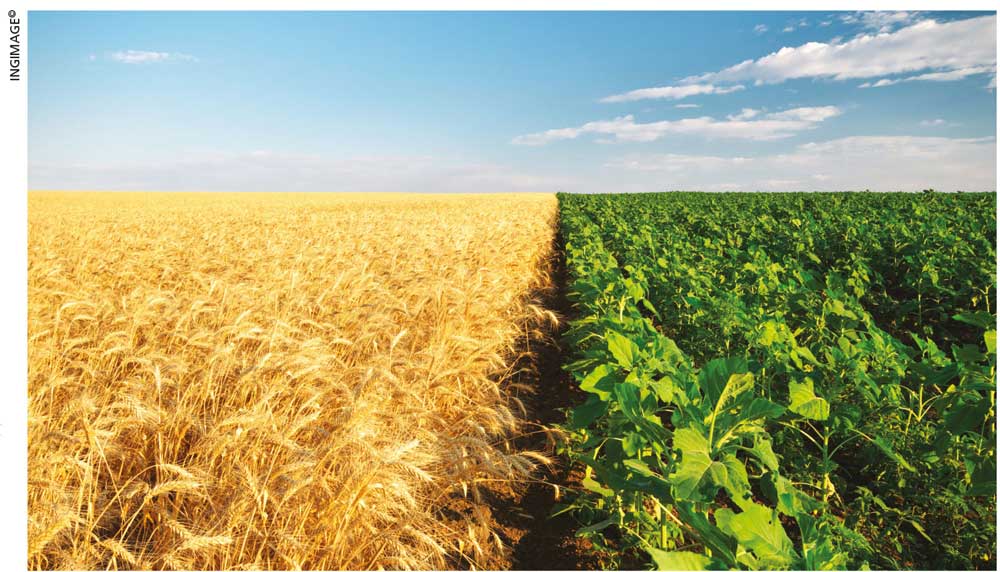AGRICULTURE SECTOR
BIG CHALLENGES SMALL FARMS
Akila Wijerathna explains the ongoing hardships that smallholder farms face

Globally, about 84 percent of farms are smaller than two hectares and operate on around 12 percent of farmland. More than 90 percent of the world’s farms can be considered family properties and are held by individuals, small groups of people or households.
Despite their operational scale, smallholder farmers produce food for a large share of the world’s population, and contribute to the health and wellbeing of their communities by growing nutritious food. They have a high crop diversity that favours healthy nutrition and market diversification.
Though smallholder farming plays a significant role in global agricultural production and sustaining rural livelihoods, these farmers often live in poverty and struggle to access or participate more equitably in sustainable agro supply chains.
Such farming is often rain fed and depends predominantly on family labour although community members may be hired to help. Most farm products enter the local market primarily. However, some commodities such as field crops and fruits do find their way into the export market.
Smallholders generally have fewer resources and technology, and often till their land using animals rather than machinery. As a result, they are often considered part of the informal economy, as their livelihoods depend on natural resources and less recognised networks to access markets.
As one of the groups most vulnerable to climate change, these farmers are already impacted by rising temperatures, droughts, unpredictable rainfall and extreme weather events. The effects can vary in severity and frequency, according to conditions such as altitude, proximity to water sources, soil quality, exposure to solar irradiation and so on.
Moreover, the COVID-19 pandemic has had a devastating impact on the livelihoods of smallholders by seriously affecting traditional farming methods, and rendering productivity and returns unstable and unpredictable.
Such farmers in developing countries are often trapped in a vicious cycle of low intensity subsistence oriented farming, poor yields and insufficient profits to make beneficial investments. These factors contribute to high levels of poverty in many rural areas.
Smallholder farmers grow multiple crops on their farms and maintain de facto produce diversity. However, agricultural development strategies rarely consider such crop diversity as a criterion for fostering innovation.
When diversifying their farm systems, farmers often define multiple goals. For example, they consider cereals for food security, pulses and vegetables for nutrition, cash crops for increasing income, off-season yields and forage for animal produce to stabilise income, and intercropping and field scattering to reduce productivity risks.
Crop diversification seems to be more beneficial than specialisation to these farmers. Interventions that assess and build on de facto crop diversity are more likely to succeed. However, it is essential to understand that farmers’ goals should form the basis of working with them to develop, select, evaluate and implement farm diversification strategies.
To support small-scale farmers increase their climate resilience, researchers should help them identify climate hotspots, assess levels of vulnerability across various regions and fine-tune context specific strategies to provide much needed support.
Furthermore, these farmers would benefit from digital technology and data, to drive farming processes and decisions to alleviate risks associated with farming.
Smallholders are the main target of interventions that are collectively known as climate-smart agriculture (CSA).
Firstly, this contributes to an increase in global food security and broader development, enhances farmers’ ability to adapt to climate change and mitigates greenhouse gas emissions.
Secondly, farm diversification is a component of CSA and not only contributes to the realisation of UN Sustainable Development Goal (SDG) 13: Climate Action but also other SDGs including SDG 1: No Poverty; SDG 2: Zero Hunger; SDG 12: Responsible Consumption and Production; and SDG 15: Life on Land.
Smallholders often lack the capital to make investments to convert a partial or full subsistence farming system into a commercial farm. For example, many high value crops such as leafy vegetables are perishable, and often require additional investments in post harvesting and transportation.
Farmers can be particularly vulnerable to fluctuating market prices too. Linking them – especially smallholders – to markets requires the support of governments, food processors and distributors to strengthen post-harvesting facilities, distribution channels, stable production supply and insurance.
Improving farmers’ participation in sustainable agricultural supply chains represents a significant opportunity for substantial benefits such as poverty reduction, gender equity and a healthier environment.



